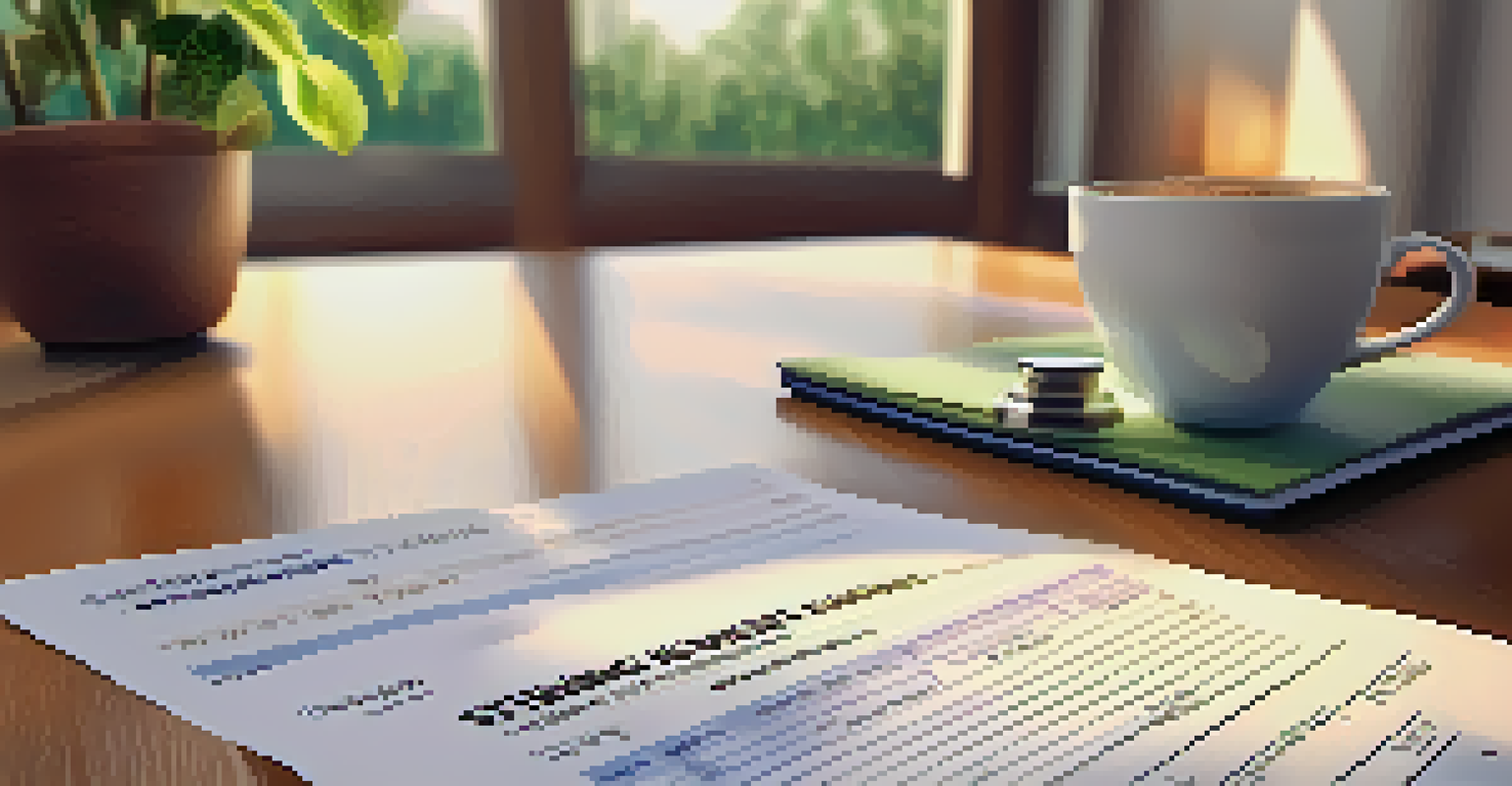Emergency Funds: Why Professionals Need Financial Buffers

Understanding the Concept of Emergency Funds
Emergency funds are savings set aside for unexpected expenses, like medical emergencies or urgent home repairs. Think of it as your financial safety net, providing peace of mind when life throws curveballs your way. By having this buffer, you can avoid dipping into your retirement savings or relying on credit cards, which can lead to debt.
An investment in knowledge pays the best interest.
Many professionals underestimate the importance of having an emergency fund, often believing that their regular income is enough to cover any surprises. However, life is unpredictable, and having a dedicated fund can make all the difference in stressful situations. It allows you to tackle emergencies without panic or financial strain.
Ultimately, an emergency fund is a proactive measure that promotes financial stability. It’s not just about saving; it’s about securing your future and maintaining your lifestyle, even when unexpected events arise.
How Much Should You Save in Your Emergency Fund?
A common guideline is to save three to six months' worth of living expenses in your emergency fund. This amount can vary based on your personal circumstances, such as job stability and health. For instance, if you work in a volatile industry, you might aim for a larger buffer to safeguard against sudden unemployment.

To determine your target amount, start by calculating your essential monthly expenses. Include rent, groceries, utilities, and any debt payments. Once you have a clear picture, multiply that number by three or six to establish your savings goal.
Emergency Funds Provide Security
Having an emergency fund acts as a financial safety net, allowing you to handle unexpected expenses without stress.
Remember, it's not a one-size-fits-all approach. Tailor your emergency fund to fit your unique situation and comfort level. The goal is to create a cushion that allows you to navigate life's uncertainties with confidence.
The Benefits of Having an Emergency Fund
An emergency fund provides a sense of security, allowing you to handle unexpected expenses without stress. With this financial cushion, you can focus on solutions rather than worrying about how to pay for unforeseen costs. It also helps prevent the need for high-interest loans or credit card debt during emergencies.
Do not save what is left after spending, but spend what is left after saving.
Additionally, having an emergency fund can enhance your overall financial health. When you know you have savings set aside, you might feel more comfortable taking calculated risks, like pursuing a job opportunity or starting a business. This financial flexibility can lead to greater professional growth.
Moreover, an emergency fund can protect your long-term savings goals. By covering immediate needs, you can keep your retirement and investment accounts intact, ensuring that your financial future remains on track.
Common Misconceptions About Emergency Funds
One common misconception is that emergency funds are only necessary for those with unstable jobs. In reality, anyone can face unexpected financial challenges, regardless of job security. From car repairs to sudden medical bills, emergencies can affect anyone, making an emergency fund essential for all professionals.
Another myth is that emergency funds should only be used for major crises. However, this fund can also cover smaller emergencies, like urgent home repairs or unexpected travel. The key is to use the fund wisely and only for genuine emergencies, ensuring it remains intact for future needs.
Save Three to Six Months' Expenses
A common guideline suggests saving three to six months' worth of living expenses to ensure you have a sufficient buffer.
Lastly, some believe they can rely solely on credit cards for emergencies. While credit can provide temporary relief, it often comes with high-interest rates and can lead to debt accumulation. An emergency fund offers a safer, more sustainable alternative.
Where to Keep Your Emergency Fund
It's essential to choose the right place for your emergency fund to ensure it’s both accessible and safe. High-yield savings accounts are popular options, as they typically offer better interest rates than traditional savings accounts while keeping your money easily accessible. This way, your funds can grow while still being available when you need them.
Another option is a money market account, which often provides slightly higher interest rates and may offer limited check-writing ability. However, be cautious of minimum balance requirements to avoid fees. Remember, the goal is to keep your funds liquid so you can access them quickly without penalties.
Avoid keeping your emergency fund in investments like stocks or bonds, which can be volatile. The last thing you want during an emergency is to sell investments at a loss. Choose a safe, stable account that allows your funds to grow while remaining readily available.
Tips for Building Your Emergency Fund
Building an emergency fund takes time, but starting small can lead to big results. Begin by setting a realistic monthly savings goal, even if it's just a small amount. Consider automating your savings by setting up a direct transfer from your checking account to your emergency fund each month, making it easier to stick to your plan.
Another effective strategy is to use windfalls, like tax refunds or bonuses, to boost your savings. Instead of spending this extra money, funnel it directly into your emergency fund. This approach can accelerate your progress and bring you closer to your savings goal more quickly.
Regularly Reassess Your Savings
It's important to periodically evaluate your emergency fund to ensure it meets your changing financial needs.
Lastly, celebrate your milestones along the way. Each time you reach a savings target, give yourself a little reward. This positive reinforcement can keep you motivated and committed to building your financial buffer.
Reassessing Your Emergency Fund Regularly
Once you've established your emergency fund, it's crucial to reassess it periodically. Life changes, such as a new job, a move, or expanding your family, can alter your financial needs. Regularly reviewing your savings ensures that your emergency fund remains adequate for your current situation.
Consider setting a reminder every six months to evaluate your expenses and savings goals. This practice can help you adjust your fund to match any changes in your lifestyle or financial obligations. If your expenses have increased, it may be time to boost your savings.

Remember, your emergency fund is not static; it's a dynamic part of your financial strategy. By staying proactive and making adjustments as needed, you can maintain a solid financial buffer that keeps you secure in uncertain times.